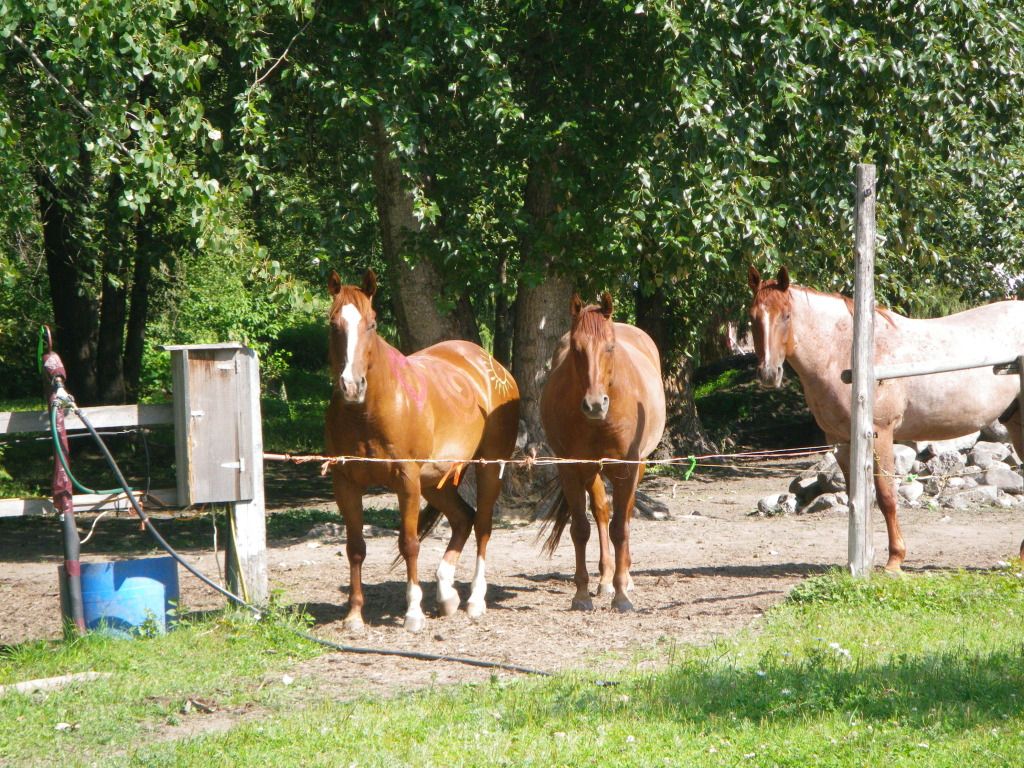To Blanket or Not to Blanket
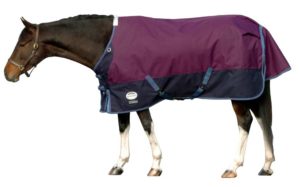
Reference: The original article was published by Carole Herder in Cavallo Horse & Rider.
To blanket or not to blanket – that is the question. That time of year is coming around again, the season is changing, the days are getting cooler and the nights are getting colder. All I see is horsey people running in and out to the paddocks and barns, taking blankets off, putting blankets on, holding different blankets up and trying to decide which weight to use. All of my friends are on their smart phones constantly checking out the weather to see if blankets are needed that night. Bordering on crazy!
The blanket question is almost as heated as the barefoot hoof question (but not quite!). Personally, I think there are pros and cons for each argument. Yes, we want to keep our horses more naturally and they have evolved to survive all kinds of weather, without human interference. And yes, there are many wild and feral horses across the globe who manage perfectly well without our rugs. But what if your horses aren’t kept naturally, what if you need them clipped or clean or dry, what if they are old and sick?
Horses are naturally equipped to deal with all kinds of weather. They have amazing inbuilt thermo-regulation devices! Thick winter hair will replace thin summer hair in order to help with insulation and act as a windbreaker. These layers will stand up when it is cold and lay down when it is warm. Raindrops and snowflakes literally fall off the downward tilted hairs. They have lightly muscled lower legs which consequently require less circulation and heat. Their large digestive tracts process a mostly fibrous diet when generates large amounts of heat. Long nasal passages warm the air before it reaches the lungs. Their relatively thick, blocky bodies retain heat for longer. They use their own rumps for wind blocks! Their blunt equine muzzles contain so much blood that the cold finds it hard to get in. If they choose to stand still rather than run around, they will shiver to keep warm – this is genuinely a highly effective heating device.
Consider the above pros and cons before donning your horse with a blanket this winter.
Easing grief with the Bach Flowers
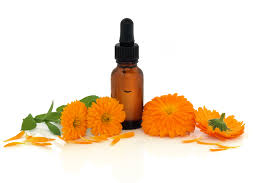 Reference: Article sourced from the Bach Flower Email Bulletin by Inner Harmony Healing.
Reference: Article sourced from the Bach Flower Email Bulletin by Inner Harmony Healing.
Grief is a multifaceted response to loss, particularly to the loss of someone or something that has died, to which a bond or affection was formed.
Everyone deals with grief in different ways, and it also depends on if the grief has come on because of a sudden death in the family.
The Bach Flowers can offer a gentle way to help our emotions in times of grief, and meet individual needs. Here are some remedies that may help…
Suffering from shock and/or trauma?
Star of Bethlehem assists with the distress and unhappiness following a shock (which can be timeless). It can provide comfort and consolation.
Feeling guilty about something you thought you should have done or not done?
Pine is for guilt and self-blame and can relieve us from guilty feelings.
Just want to feel miserable and shut yourself off from the outside world?
Water Violet is for when you just have to withdraw and seek solace in isolation. It can help bring on the desire to interact with others.
At at end of your endurance with grief and feel as there is no hope in feeling happy again?
Sweet Chestnut is for when you have reached the end of your endurance, and can liberate us with optimism and a peace of mind.
Worried about how the loss can impact other family members of pets?
Red Chestnut is for those who are over-concerned for the feelings of loved ones and provides calm and rational concern.
Feeling that all the joy and happiness has been sucked out of your world?
Wild Roseis for feelings of apathy, resignation and disinterest in life. It can bring about a lively and enthusiastic interest in life again.
10 Pointers on Parasites for the Fall season
Reference: Adapted from a similar article posted on www.rivasremedies.com
Fall is a good time to address parasites since once the eggs are swallowed they will prepare to hibernate in the intestinal walls or encyst to other organs for the winter. Below are a few points to keep in mind to keep your horse healthy and parasite free this fall:
- Parasites produce toxins including ammonia; ammonia stresses the liver and kidneys, interferes with brain function and can contribute to laminitis.
- Encysted parasites are those parasites in the larval state that have formed a protective membrane around themselves and have migrated from the hindgut (large colon and cecum) through the intestinal walls and into the liver, kidneys and/or heart/arteries. If left untreated they are capable of causing many health problems: weight loss, a dull coat, poor appetite, diarrhea, fatigue, liver stress, leaky gut and colic.
- Encysted parasites do not usually respond to herbal or homeopathic dewormers, however it is usually either the long-term/heavily infested horses that have a problem with encysts.
- Most horses with long-term and/or heavy loads of parasites are anemic due to the blood loss. Low iron levels have a significant effect on overall health including lowering the resistance to parasites, contributing to chronic infections and depressing the immune system. Cases of anemia should always be treated with Iron-Up, an organic form of iron.
-
Chemical de-wormers, while often necessary, do not always need to be administered as a full dose (i.e. entire syringe) for every horse. Mildly infected horses need less than a full dose and some horses, including those with encysts, will require a small amount repeated two or three times one to two weeks apart. Heavily infested horses also usually require more than one dose.
- It is not necessary to “syringe” a horse with a chemical de-wormer – this is an invasive practice. Smaller doses can easily be hidden in feed and larger doses can be spread out throughout the day also hidden in feed.
-
Do not routinely de-worm your horse with chemicals unless you have a fecal analysis done to determine if it is even necessary. It is not appropriate to use chemicals for prevention.
-
No matter what de-worming program you are using – natural or chemical – make use of regular fecal analyses to show if your program is working or not.
-
The best defense against parasites is a healthy hindgut with a balanced eco-system, adequate levels of important nutrients and a strong immunity.
- Horses with strong digestion and intestines are not attractive to parasites who must rely on weakening their host for optimum survival. In fact, it is estimated that only one-third of the herd actually carries the parasite loads.
The Four Pillars of Natural Hoof Care
Reference: Excerpts from an article by Narayan Khalsa from www.horseconscious.com
In our last article, we shared a few tenets on the importance of minerals in the horse’s diet to improve hoof health. What are some of the other factors we can look at to care for them even further? There are four basic pillars of hoof care. Lets look at them in detail:
Natural Boarding
In a natural boarding environment we emulate this need to move by creating what we call a paddock paradise. By setting up multiple feed stations in your paddock, using small mesh hay nets, propagating other interesting and healthful items like loose rock salt, we encourage our horses to move all day. This keeps your horse in shape, happy, entertained, and feet healthy. Adding rocks or pea gravel to parts of the paddock is great too. Being a herd animal, they need companionship. They value family like we humans do, and the need to have other horses in contact with them all the time is part of their nature in order to groom, play, even fight, but more than that – to love.
Natural Trim
By mimicking the natural wear patterns, only removing that which would be worn away in the wild, we help precipitate natural growth patterns, coaxing into form the truly natural hoof belonging to that unique creature. There is no set angle, no set toe length, and no set measurement of any kind. There is only undying variation in nature, and to try to manipulate a hoof into some set of measurements is dangerous. A NHC Professional does not need to worry about any of this, but simply apply the wear patterns and let nature take its course. Again a true Natural Trim is nothing more and nothing less than applying these wear patterns and only removing that which would be worn away in the wild.
Natural Diet
By eliminating high sugar commercial feeds, high sugar supplements, and high sugar grasses, you are eliminating one major cause of laminitis, the number two killer of domestic horses. Too much sugar saturates the hindgut, resulting in a bacterial imbalance that through a cascade of events starts to create a separation of the hoof from the horse. This is extremely painful for a horse and easily avoidable.
Natural Horsemanship
The horse has evolved to move in an exact fashion, through what we call the Natural Gait Complex. This is the walk, trot, canter, and gallop, in its myriad of forms. They did not evolve with a rider on their back, and so much consideration and preparation is needed. Most important, and the cornerstone of this pillar is riding in harmony with their natural gaits. By teaching a horse natural collection, the horse can develop a proper carrying shape, allowing them to carry a rider more comfortably without damaging them or causing them pain. We also recommend not mounting a horse until at least 5 years old, but if you will, closer to 7.
Hoof Nutrition for Healthy Hooves
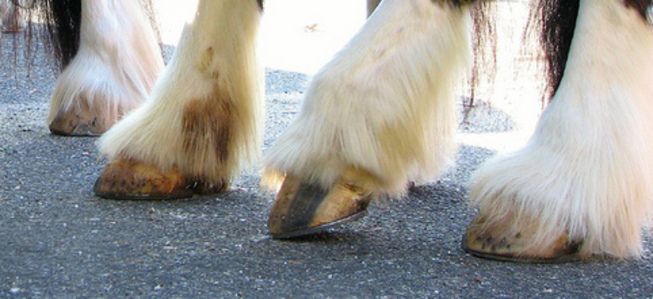
Reference: Excerpts from a blog by Marijke van de Water (Equine Health and Nutrition Specialist) from Rivas Remedies (www.rivasremedies.com)
Horse hooves require tremendous amount of nutrition including protein, sugars, vitamins and minerals. Minerals such as straight sulphur, selenium, and silica are significant in overall hoof health. Silica promotes bone health, strengthens collagen and hardens the hoof wall, while selenium and sulphur contribute to collagen production and strengthen the cross link bonds in the keratin.
Sulphur – the bonding agent
Sulphur is a critical nutrient for strengthening the amino acids (protein units) that serve as major building blocks in healthy collagen to form a strong hoof wall. Obvious signs of sulphur deficiency include poor hoof growth, dry and cracking hooves, poor hair coat, skin conditions and allergies. Sulphur can be supplemented as methionine or as Horsetail herb.
Selenium – a must for hoof health
A selenium deficiency in the hoof can appear as horizontal cracks near the top of the hoof below the coronet band, a yellowing frog and/or lameness due to either weak hoof structure or strained ligaments and tendons. Selenium can be supplemented in either an inorganic form (known as sodium selenite, which is actually a by-product of copper mining) or in an organic form. Sodium selenite is the most common supplement available but is also the toxic form of selenium which is why it cannot be given in extreme doses.
Silica – undervalued and underutilized
Silica is not only critical for the early stages of bone formation but also plays a major role in the formation of the collagen matrix of bone and cartilage. Normally horses obtain small amounts of silica from grass and hay as all plants use silica to provide rigidity and structure to their leaves and stems.
Deficiency symptoms of silica include weak and brittle hooves, sand cracks, abscesses, lameness, inflammation of tendons, and bone weakness with loss of density. Nutrient Sources Some of the best plant sources for silica and sulphur supplementation is horsetail and oatstraw. Horsetail has a number of other benefits: strengthens the respiratory system, improves skin and hair coat, aids urinary function and increases calcium absorption. Poor hoof circulation is always a factor in unhealthy hooves since improper hoof mechanism constricts blood supply and therefore the delivery of oxygen and nutrients. Horse hooves are very much a reflection of the whole and the treatment of the hoof should always consider the whole health of the horse. Conversely, treating the whole health of the horse will always benefit the hoof.
Caring for Tendons & Ligaments with Animal Acupressure
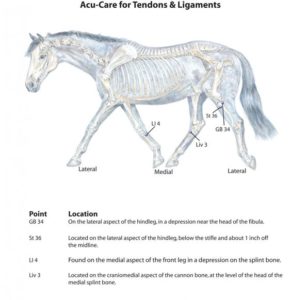
Horses, dogs, and cats need exercise as much and maybe even more than we do. The living body is designed to move so that bones, muscles, tendons, and ligaments stay strong and healthy. Internal organs need movement to function properly. To keep your animals happily on the move it’s wise to pay attention to their tendons and ligaments.
Tendons and ligaments need to be flexible because they are the “rubber bands” which hold the body together. Without these rubber bands the body would be immobile. Each of these soft body tissues performs an absolutely essential and distinct role:
Ligaments are the strong bands, cords or sheets that connect to bones or other anatomical
structures. Ligaments:
• Support joints and hold bones in place
• Support and strengthen other ligaments, and,
• Bind tendons close to joints.
Tendons are cord-like bands that connect muscle to bone. Tendons are involved in
movement: when a muscle contracts, or shortens, the tendon pulls on the bone causing the structure to move.
Your job is to help your animals to keep moving and enjoying their lives. When your horse or dog is fit, he’s less likely to experience injury or illness. And, to keep him fit, his tendons and ligaments need to be both supple and strong. There are a number of ways you can support his general fitness.
Go slowly and warm- up his muscles, joints, tendons and ligaments before heavy exercise. Training on uneven terrain and going up and down hills to develop well rounded and balanced muscling. A weekly acupressure session focusing on flexibility and building strength of tendons and ligaments can greatly enhance your animal’s fitness.
Below are two Acu-Care for Tendons & Ligaments charts identifying acupressure points you can stimulate to consistently support your animal. The canine chart can be used for both dogs and cats. Give you horses, dogs, and cats the benefit of this acupressure session every 5 to 7 days and you will be to enjoy your exercise together.
Friendship Training With Chuck Mintzlaff
Reference: This is an excerpt from an interview by Mark Mottershead as published on www.horseconscious.com
Chuck Mintzlaff is a pioneer of the ‘Friendship Training’ concept. His philosophy and way of life can be summed up by the phrase: ‘First do no harm.’
As Chuck says,“But as with many things that are simple, the underpinnings are a bit more complex. ‘First do no harm’ entails every aspect of our horse’s mental, emotional and physical well-being. That involves quite a few different aspects!”
Further Information On Friendship Training by Chuck
“I always recommends to prospective students a preliminary if not greater in-depth understanding of equine culture and normal herd dynamics in their natural environment that can only be gained from equine research scientists and ethologists (NOT the anecdotal musings of ‘trainers’). As you continue through the Levels, various other reading/study requirements are strongly recommended in addition to the required study curriculum.
We realize that for some, this may be regarded as ‘going back to night school.’ But really, the required reading/study material is minimal, and it will give you a much greater, in-depth understanding not only of your horse, (and ALL horses) but also WHY we still have so many behavioral issues and ‘horse problems’ after working with an animal that has remained unchanged mentally, emotionally and instinctually for 6,000 years.”
You can learn more about Friendship Training below and at:
http://www.friendshiptraining.org/
How to remove the herd bound behaviour in horses
Reference: An excerpt from a blog post by Carolyn Resnick, Carolyn Resnick Horsemanship: Liberty Horse Training.
At Liberty when the horses are together in their home site, allow one horse to eat a potion of free choice grain and keep the other horse away while he is eating. Then when he is finished let the other horse eat and keep the first horse away.
When the horses have learned to wait for their turn to eat, then feed one horse outside the area next to the fence.
Leave food for the horse that remains in his home base. Take a longer and longer time to return the horse that is outside of his area, each time feeding longer distances away for the horse’s home site. (Be sure to establish a routine.)
Bit by bit your horses will be able to separate for longer periods of time because of the bond that you created through the leadership exhibited over the food that you bring to both horses.
Always start with Sharing Territory to put yourself in an altered state of being and a heighten state of awareness. This way your approach will be more appropriate in getting the results you want to receive. Take your time and believe you can do it and the magic of life will be there to support you all the way. You will also find a self guidance that you can trust in from the results of Sharing Territory.
When you feel that your horses are not concerned about separation, you can then proceed to take short rides returning back to the buddy often. The horse that is left behind is fine because he gets special treats. The horse you are riding is fine because he has a deeper bond with you and a routine that he knows will return him back home.
Homemade Meal Recipe for Horses
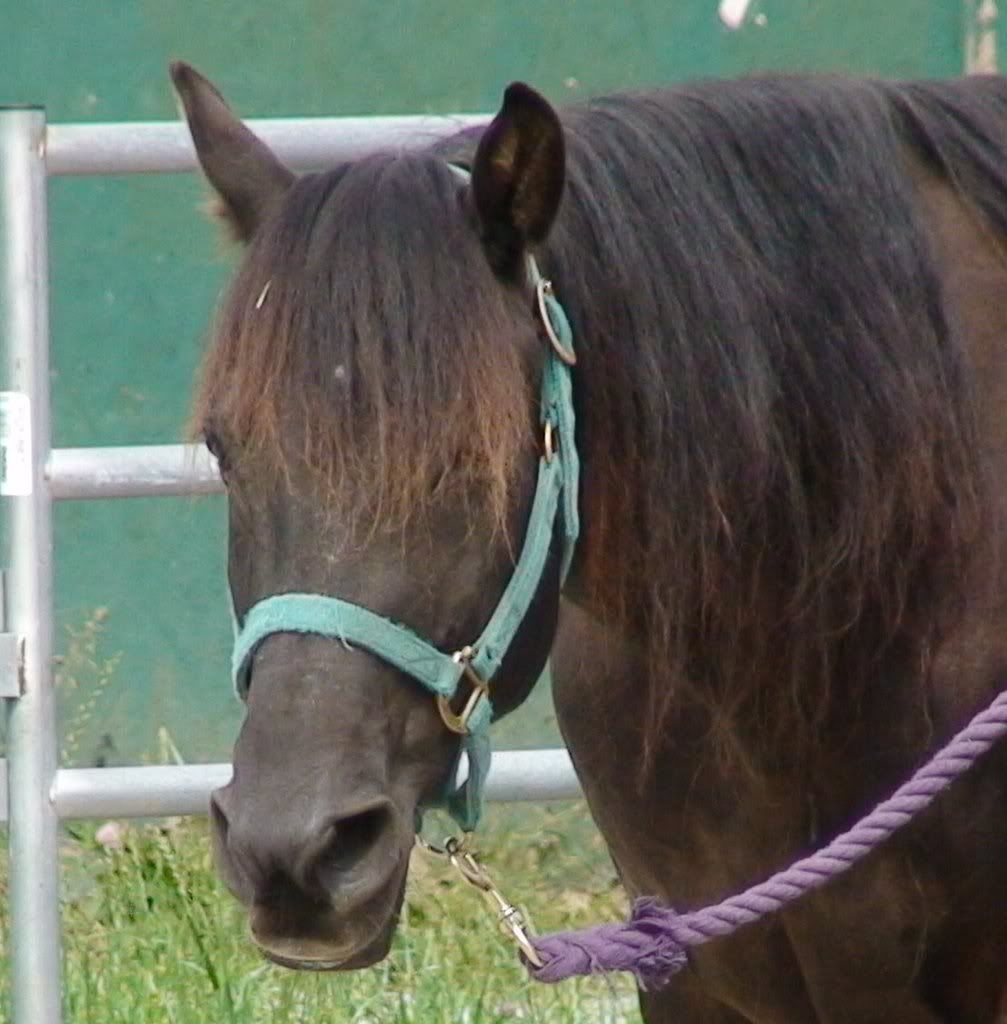 Reference: Sourced from a blog post written Marijke van de Water in www.rivasremedies.com
Reference: Sourced from a blog post written Marijke van de Water in www.rivasremedies.com
Very frequently clients ask me if there are any equine commercial feeds that are healthy and suitable for their horses. For convenience I wish it was possible to recommend an all-around commercial horse feed but every horse is so unique with so many different requirements that this is almost impossible to do. The other problem is the ingredient list: most commercial feeds are full of unhealthy products including poor quality oils, grains, sugars, molasses, fillers, binders, empty calories and by-products…it’s like trying to recommend a processed food program for people.
Nothing beats a home-made meal so here is a recipe for one that horses like and that they can enjoy frequently. It’s also a great vehicle for mixing in supplements. The quantities vary depending on the age, weight, lifestyle and exercise levels of your horses so use the following quantities as a guideline.
*Beet Pulp, always soaked – 1-2 cups
Wheat Bran – ½ – 1 cup
Wheat Germ – 1-2 Tablespoons
Alfalfa Pellets – 1-2 Tablespoons to ¼ cup – if necessary for increased performance
Happy Horse or Happy Horse Senior – 1-2 Tablespoons
(Provides a plant-based source of all the trace minerals and vitamins in
a highly absorbable form to which added nutrients can be added as necessary.)
Fruits or vegetables – feed ¼ to ½ cup of any blend that your horses enjoy – e.g. apples, watermelon, peaches, plums, berries (all kinds), cauliflower, carrots, beet tops, peas, etc.
*Use soaked Soybean Hulls (1-2 cups) as a beet pulp alternative if necessary or for variety.
*Twice per year add Pro-Colon probiotics – ¼ tsp for 3 weeks. Riva’s Pro-Colon is specifically formulated for horses and refrigerated for maximum potency.
Flutter’s Arrival – An Inspiring Birth Story

Source: Marcy Criner is the creator of Horses of Us, an equine artist, and a follower of horse wisdom. This story is one of the inspiring posts on www.horseconscious.com.
One flick of the finger turns the barn from a soft dreamy darkness to bright glaring light. In a flash, our mood and tenor shifts to the urgency of birth. From her black hindquarters, we see a translucent sac covering two hoofs quickly emerge. Aspen is standing then chooses the lay down with a graceful thump. We see the baby’s nose between its feet. Another choice is made and Aspen is up again. Taking a moment to think she moves then decides to go back down.
Once she is down, I find myself on the ground covered in fluids with the baby’s nose in my hands. I pull the white slick sac away from his nose and hear him take his first breath. Another push and the baby is out. A rush of welcoming whinnies and neighs fills the space. This strong black colt is still linked to his mother through the umbilical cord. I begin to stroke him feeling his warm body below me. Aspen turns her regal head and stares at him with a look of adoration. A deep neigh emanates from her. His long legs are moving as if to say he wants up! I continue to touch him as we wait for his mother to rise.
Before me I see all legs ready to run, hop, and explore the world. I feel nothing but shear appreciation. Appreciation that I am a witness to the essence of life. Seeing life in its purest form. I feel the aliveness in me as I stand with Martin and watch Aspen rise, as her baby knows he will follow. He struggles and falls all the while being encouraged by his mother. I feel a deep knowing well-up inside me. From this place, I am connected to a greater universe. This is it. In this moment the curtain pulled back and a feeling of life force called me in.
All four feet were planted on the ground. He is standing! Waves of wonder flow though me and he starts experimenting with his newly discovered legs. Falling and twisting he tumbles. As quick as he falls, he is back up on his feet.
Martin and I see milestones like nursing come and go. I wonder about transformation and think of this newborn foal. I see myself in him. In twenty minutes, he transformed himself from one world to the next. Thoughts of mental states and our ability to transform them flood my mind. A quiet stillness settles in for the night as early morning approaches.
With a full belly, the newborn colt, Flutter, begins his peaceful sleep. We are mesmerized by the simple, perfect beauty that life brings to those in the dark or in the light. In stillness or in fits of urgency, the ability to move to the essence, to feel the source of all things is the gift within. That moment of pure presence opened my heart to true joy that quiet night in May.


